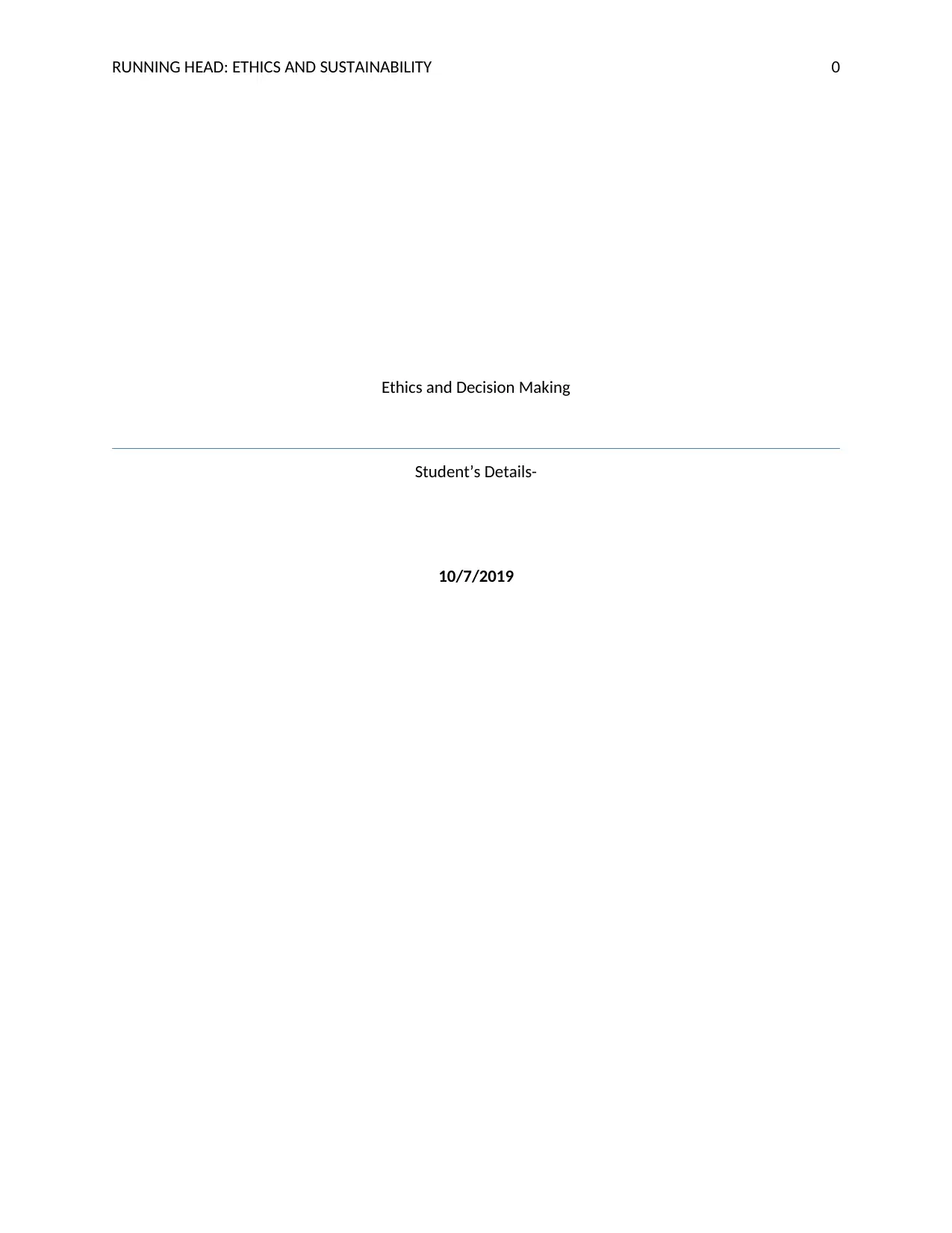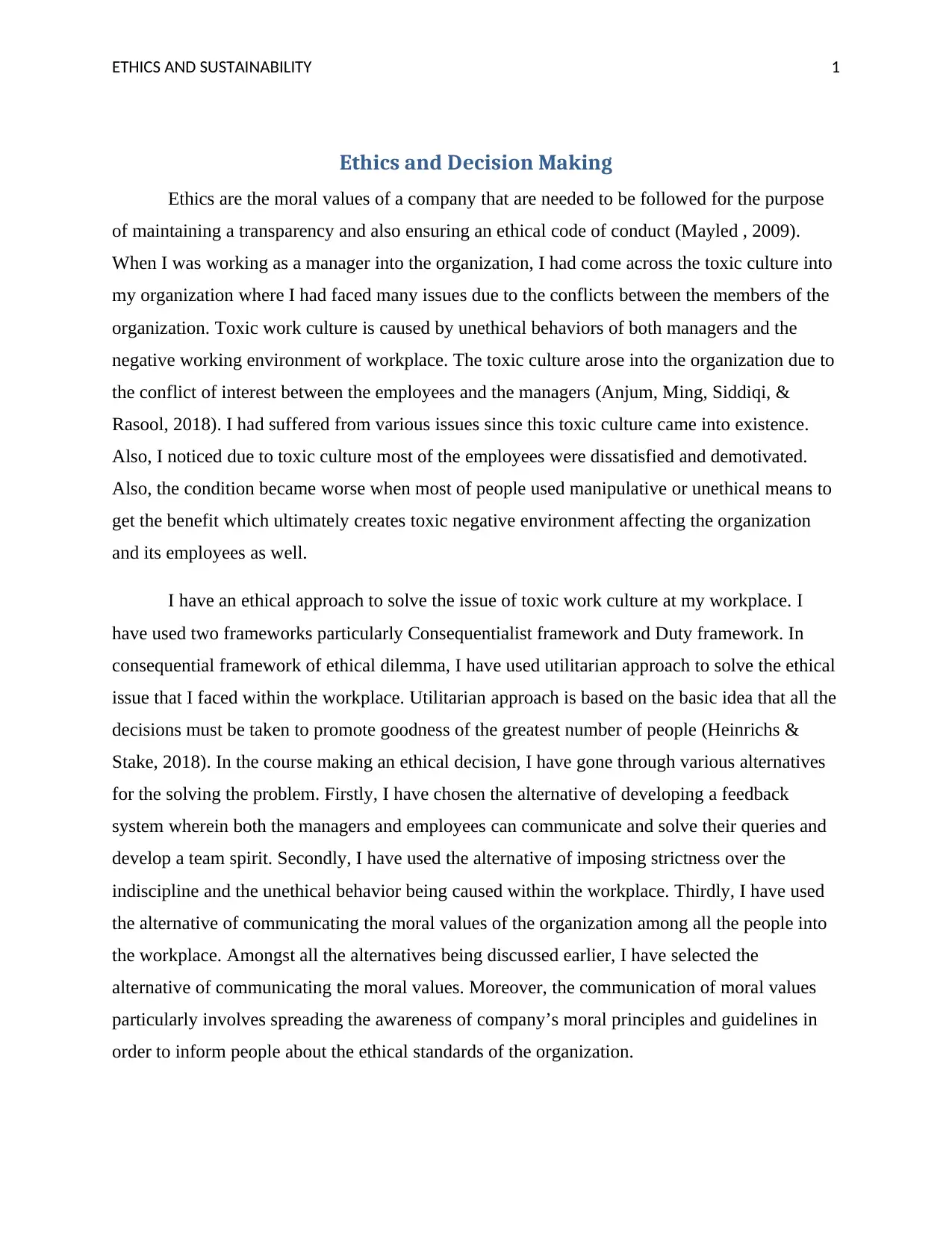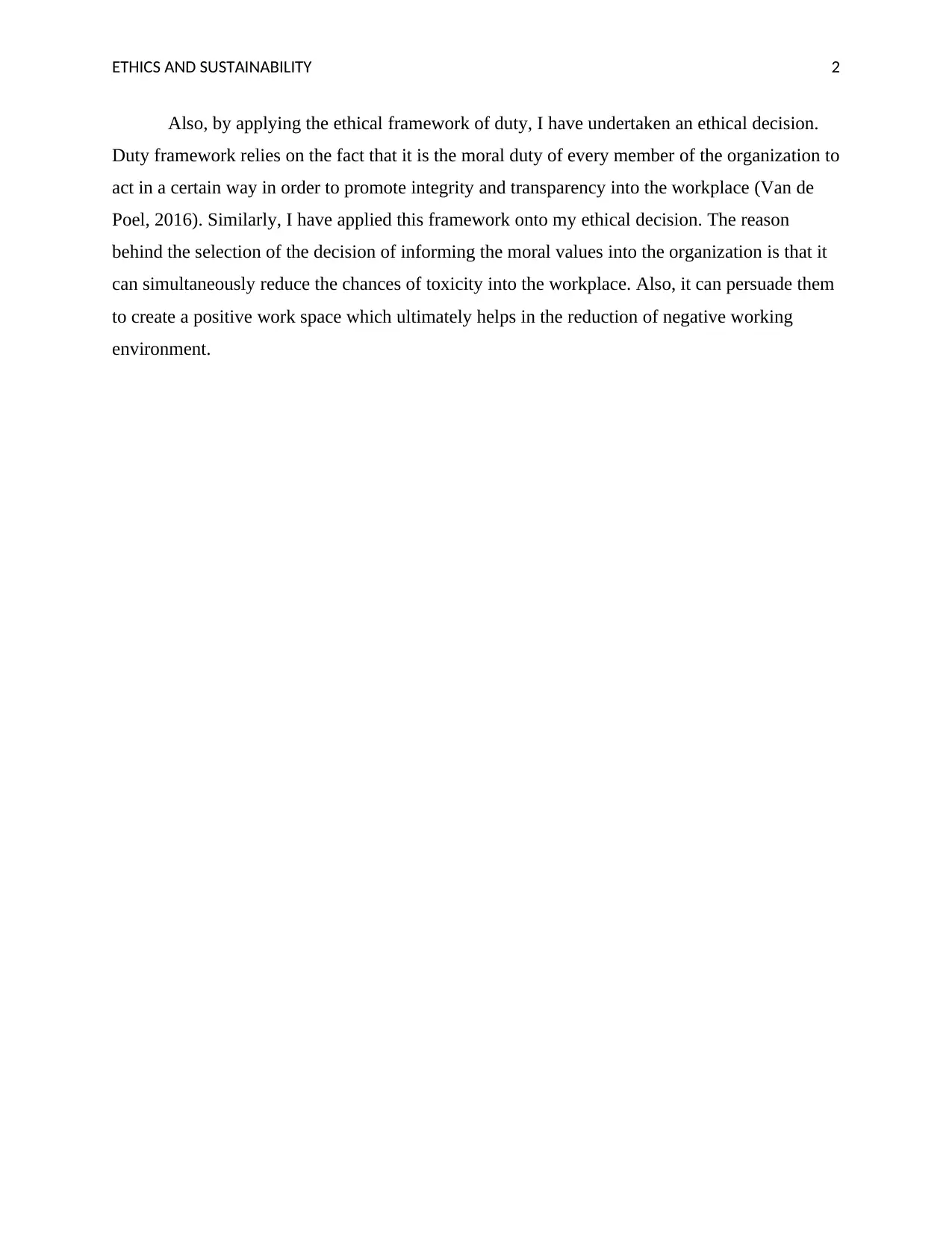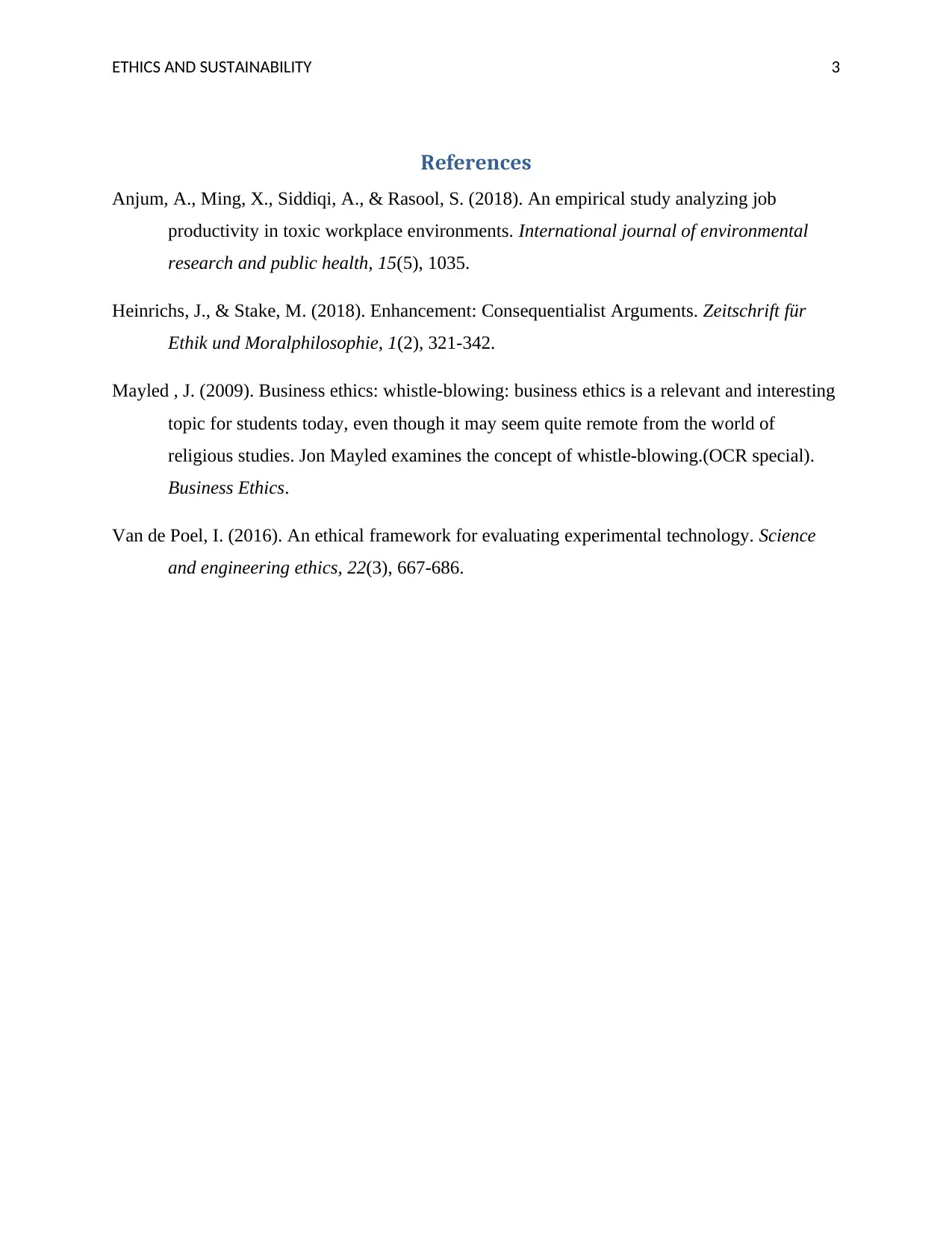Ethics and Decision Making Report: Workplace Ethics Analysis
VerifiedAdded on 2022/10/01
|4
|733
|89
Report
AI Summary
This report delves into the complexities of ethical decision-making within a workplace environment, specifically addressing a scenario involving a toxic work culture. The student, drawing from their managerial experience, identifies the root causes of the toxic environment, including conflicts of interest and unethical behaviors. The report outlines the negative impacts of this culture, such as employee dissatisfaction and demotivation. To address the issue, the student employs two key ethical frameworks: the consequentialist framework, utilizing a utilitarian approach, and the duty framework. The student evaluates several alternatives, ultimately choosing to communicate the organization's moral values to foster a positive work environment. The report concludes by emphasizing the importance of ethical principles in creating a transparent and ethical workplace, referencing relevant academic sources to support its analysis.
1 out of 4











![[object Object]](/_next/static/media/star-bottom.7253800d.svg)